Spanish industry has signed the initial framework contract of the Future Combat Air System’s (FCAS) demonstrator phase.
This contract, signed with French and German industry partners, completes Spain’s onboarding as an equal nation across all FCAS activities.
“The signature closes a ten month process of onboarding Spain as the third nation. Airbus, which has been dedicated over the last year to support this integration of Spain, welcomes this step and takes on a primary role at the heart of Spain’s participation in FCAS, working directly with European partners and wider industry in support of Spain’s contribution to the programme.
The contract covers initial work on developing the programme demonstrators and maturing cutting-edge technologies, with the ambition to begin the NGF demo flight tests in the second half of 2026.”
Alberto Gutiérrez, President of Airbus Spain, said:
“This signature builds on Airbus’ acknowledged role as the aerospace and defence prime contractor in Spain and ensures we can support Spain’s best interests by contributing our proven design, industrial and technical capabilities, as well as our experience in successful sovereign European programmes.”
Airbus say that the launch of the Demonstrator Phase underlines the political confidence and determination of the FCAS partner nations and associated industry to move forward and cooperate in a fair and balanced manner.
“The increased momentum enables industry to deploy the necessary resources and best capabilities to develop this decisive European defence project. FCAS will provide the next generation of sovereign air power and represents the future of Spain’s aerospace and defence industry. Airbus will play a major role working closely with, and helping to develop, Spain’s industrial and technology capabilities.”


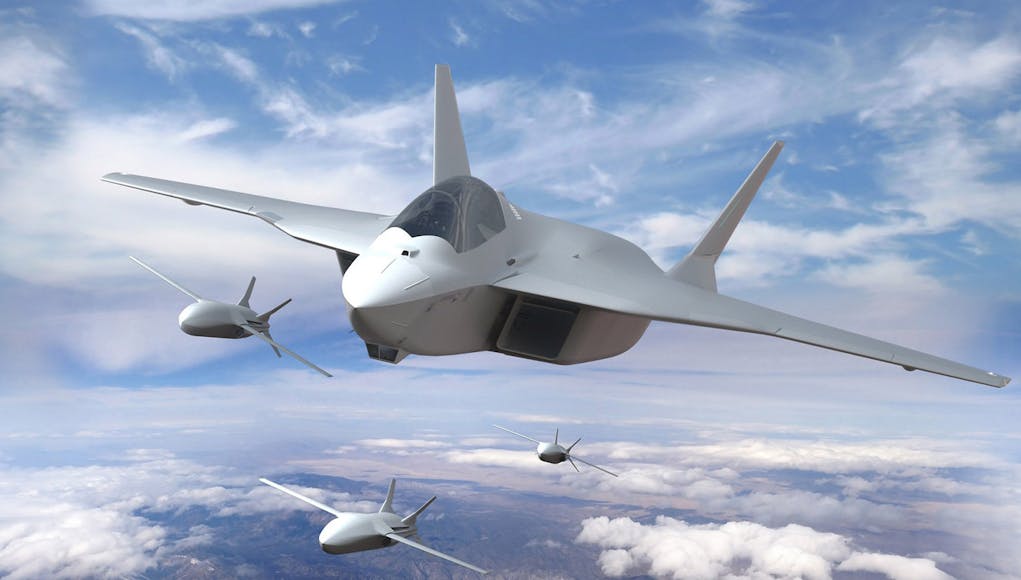
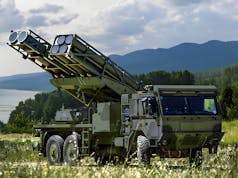



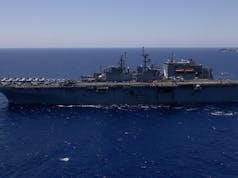
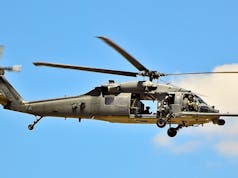
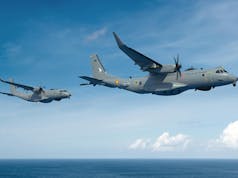
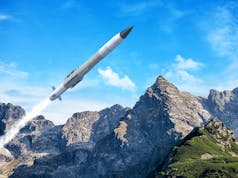

It’s a bit like backing an outsider at Ascott …. It might just win but the safe bet will be Tempest.
I think no matter what happens both programs will produce the next generation aircraft for UK, Italy, Sweden and France, Germany, Spain.
If all 6 where to get together there would be too many cooks and it would be worse than the initial development of Typhoon. The draw back is neither will achieve sufficient EOS to trouble the F35 in exports. The only potential targets will be the usual Saudi, Qatar, UAE, India
Not sure about that mate…….
Can the European Aerospace Industry Sustain Two Separate 6th Gen Fighter Projects,im not so sure,would be good if they both come to Fruition though.
Dont worry, the SCAF is probably close to the end. (At least with the Germans)
Cause the UK has such a stellar record itself in such large scale projects…
Trying to think when was the last large scale project that had a stellar record or indeed even a moderately great record anywhere to be honest it’s the nature of the beast but certainly the more fingers in the pie the more camel meat goes into the mix.
The QE class and Astutes spring to mind. Yes they had their issues but the end result is rather good, to say the least. Here is hoping T31 and T26 are “stellar”.
True enough, but as far as I can see the Tempest project has three partners currently (UK, Italy, Sweden), same as the FCAS (France, Germany, Spain), so why assume Tempest will be fine and FCAS fails?
I guess because of the Bundestag ?. France just want the same leadership UK has on Tempest on its FCAS and we can’t blame them for that.. after all they have specific requierments to reach (nuke and carrier capability) and Dassault has proved to be among the best aircraft producers..
The French have a history of turning up, taking note of the best bits and then leaving to do their own thing.
The UK is perfectly capable of producing a world class aircraft. If past experience is to go by, we will end up with an outstanding prototype with all major issues fixed and the production tooling in place and then we will cancel it and buy from the USA.
If FCAS sees the light of day let alone makes its production deadline I’ll be astounded
It will most probably fail and France will do the usual thing. Might just be wrong though, but I don’t care at this point in my life.
Agreed. We’ve seen this happen too many times to not be sceptical
Even if it succeeds France will insist on primacy in developing the design to it’s own specific needs and taking the lions share of the production work. They aren’t big on compromises!
If they wanted to join Tempest as a secondary partner on par with Italy and Sweden then fine – but that’s never going to happen and The UK will be much better off steering clear of any talk of Tempest being absorbed into FCAS.
Thales is not in the FCAS, Safran is a lackey of MTU…
French are not big on compromises ?
You kidding ?
The problem is that the German have nothing to give except money for a fighter where the french have all industrials and tech needed to make a fighter or anything that fly…
It would be more interesting to work with BAE/Leonardo than these German…
Thales may not be involved but Dassault is.
Fair points about what Germany brings to the table, but my view is that if The UK were to partner with France the former would naturally want to bring in a lot of development and production capabilities as well as cash and would naturally want to have a major say in what shape the aircraft takes – but France would still seek to call the shots and have primacy in work-share.
That’s largely what led to 2 different 6th gen European projects in the first place!
Brexit was what led to the 2 projects.
And Dassault is the lone real fighter industrial of Europe, if hes not involved in the program, who can be ?
I can understand that is hard to not see an equishare.
But it’s a military program, efficiency must prime.
After the success of this, it can led to a real European Fighter industry.
You cant really ask to dismantle the lone real industrial without anything behind…
But no, germans want everything right now, and absolutely dont care about the military weights of the program.
It’s a shame.
And for France, we are the last in Europe to have a decent close to the full spectrum, technologically advanced and “efficient” defense industry.
Of course we want to preserve them… That doesn’t mean we cant evolve to something bigger (On the MBDA/Thales/Airbus model).
But everything must come at the right time…
And the FCAS is alrealy close to be dismantle by Germany.
I wonder if the involvement of SAAB (bringing in the digital design software used to develop the new US T-7 Red hawk trainer which saw:
in the Tempest program will give the Uk an advantage over the Airbus jet?
Hi Farouk,
SAAB certainly bring much to the Tempest project.
One of the things I particularly like about the current manned Tempest design is it’s an uncompromisingly large (Raptor sized) Land based aircraft.
This equates to large internal volume for fuel, weapons and sensors, so range and flexibility.
Pan European fighter Bomber projects have always been smaller than the RAF wanted, Tornado IDS was hampered by its small size, by German insistence.
The RAF had to fight hard to make sure Eurofighter was big enough, again, fighting the Germans all the way, who wanted a smaller simpler design.
The Franco German Spanish fighter will be compromised by differing requirements, as Germany tries to keep the costs down by pairing down specs, while France goes in the opposite direction, adding cost and a great deal of extra complexity and structural weight for French Carrier capability.
Good luck with that little lot Europeans……
National bickering might not be an issue though, as by 2035, it will probably be delivered to what will effectively be a unified EU Airforce.
Hi John
“One of the things I particularly like about the current manned Tempest design is it’s an uncompromisingly large (Raptor sized) Land based aircraft”.
And therein lies a potential problem, John, because the Swedes may require a lighter (and cheaper) aircraft.
Both the Germans and Italians have been good industrial partners to the UK over the last fifty years – Tornado and Typhoon etc And I wish the Germans were onboard again. (These issues you refer too were budgetary pressures during 1992-1993 caused by the reunification of Germany).
For reasons of economy of scale in a production run, I think Tempest currently lacks one big partner.
It’s a bit of over simplification. But the aircraft specifications will be dictated by in part the Nations legacy requirements.
Sweden is flanked by NATO, Neutral Finland and a belligerent Russia. Therefore, it doesn’t need a long ranged aircraft, but one that is more of a traditional interceptor, i.e. fast quick reaction alert (QRA) times. As they are a relatively small country with a smaller GDP, they require the aircraft to be multi-role. Because of the surrounding neighbours, their use the dispersed operations method for their aircraft in a time of conflict. These aircraft are moved to austere sites and then use the Nations roads for runways. This then dictates the type of aircraft that is required. They favour the close coupled delta wing as it gives excellent short take off and landing (STOL) performance. But max take-off weight also plays a factor here, hence the single engine. However, that engine needs high specific thrust and as they aren’t interested in long duration flights, therefore there is not a large fuel load requirement, which means again the aircraft can be smaller. The original Gripen was just this. A small multi-role fighter, that was primarily an interceptor. The later Gripen E/F is a different beast. It has traded some of its STOL performance for a greater max take-off weight, which is why it is a larger aircraft than its predecessors. The Swedes realised that the earlier marks had a limited number of air to air missiles it could carry and that its duration once on patrol was too low.
The UK require an aircraft that follows the same path as Tornado ADV and Typhoon that were required to patrol the GIUK gap as part of the NATO commitment. This meant the aircraft had to be large to carry the required fuel, but also carry sufficient weapons to remain effective after an engagement. It also requires a very high specific thrust to allow it to quickly reach the larger and further borders of the UK’s EEZ, hence two engines. However, the aircraft must also be capable of conducting strike missions. So a high max take-off weight is required, so that a heavy strike payload can be carried. Again pointing towards a large aircraft. The Typhoons close coupled delta wing helps here. It can be made strong enough to carry a very large payload, whilst holding lots of fuel, but be thin enough for efficient supersonic cruising. The delta wing also helps maintain speed when turning at high speed, whereas traditional designs have a marked speed drop off when turning at high speed (supersonic).
Italy’s requirement was a bit like the UK’s when Typhoon was being designed. Except they had WARSAW pact countries directly to their right. They would have been faced by scores of older Russian designed Mig21, 23 and the odd 29s. Therefore they needed an aircraft that could overmatch these types, whilst having a large weapon load for multiple engagements. They also needed an aircraft with a blistering QRA time again requiring very high specific thrust.
Today, the UK still has its GIUK NATO commitment, but the Typhoon must also do the Tornados ground attack role. For low level strike the large area delta wing is not really suited, as it is too susceptible to buffeting. Italy’s requirement is still similar to ours and Sweden still require an aircraft with good STOL performance.
Can a large twin engine aircraft have a decent STOL performance comparable to the Gripen’s? Yes, but at a cost. For starters it will need a wing with high left devices and a low wing loading (large area wing), It will also require 2D thrust vectoring. The engines themselves will need to have very high specific thrust. But would a large aircraft be overkill for the Swedish needs? I think they will be faced with two options, buy the Tempest or have a smaller lighter STOL specific version built using the technology of the larger Tempest.
In some respects the two aircraft design may be the best approach, as it won’t be a compromised single aircraft design. The smaller aircraft will be cheaper than the larger, but benefit from using the same technology. The smaller aircraft will appeal to traditional Gripen operators or those that can’t afford the larger aircraft. However, like the Gripen vs Typhoon battle, the larger aircraft will always have the upper hand, in range, payload and reserves of power.
Hi Alan, yes and no….
First off, if we wind time back to the Tornado IDS, the Germans insisted on a smaller airframe, the UK at the time had little option but to go along with it, as programme collapse would possibly have spelled the end of British military aircraft projects..
As a result, Tornado IDS, far from being the multi roll aircraft once envisioned, became a sharply focused a central European theatre bomber.
It could have sold far better on the international market had it been the equivalent of a swing roll Phantom, as originally planned.
Re the Typhoon, the AUW (and therefore size) was fixed in about 1987, while the cold war still raged and prior to German cost cutting in the early 90’s.
The Germans wanted as small as possible, the RAF bigger, the project in fighting resulting in a larger airframe, though still smaller than the RAF wanted.
Re the Tempest, hopefully modern technology will allow a one system, two airframe approach, using the same systems and engines, a lightweight single engine design for Sweden and a Large twin engine design for the UK …. Both appealing to the export market.
After Typhoon was in service, the scheduled upgrades were pushed to the right. The blame for this can squarely be put with the Germans. Both Italy and Spain wanted a more multi-role aircraft. The UK wanted upgrades to the Captor radar and IRST, both of these were put on hold by German instrasegence, as all four partners had to agree on the upgrade. At the end of the Cold War after German reunification, they even cancelled its spares program, seeing little requirement as the threat had gone away. They didn’t see the point in funding development programs. At one point they were going to down size their whole fleet, but cancelled a load of orders instead.
I am hoping that the three Nations of the UK, Sweden and Italy will have more forethought with regards to Tempest’s development after it has gone into service.
We can only hope…. A far more flexible approach needs to be taken with Tempest.
I really hope Tempest continues to gather pace, it certainly needs a good injection of Saudi money (and an order for 80 plus) to keep the pace moving.
I do think that BAE systems and SAAB are a superb pairing, BAE taking the lead in ‘large twin’ airframe design and SAAB taking lead in single engine light weight design variants.